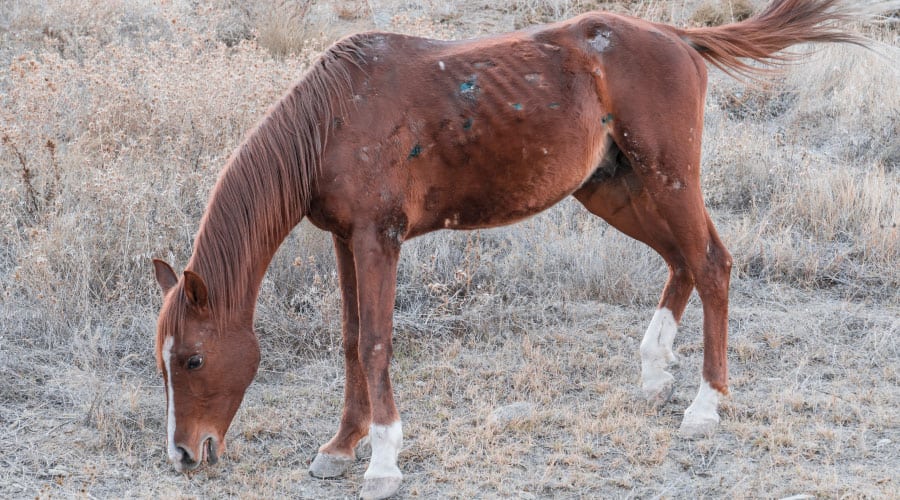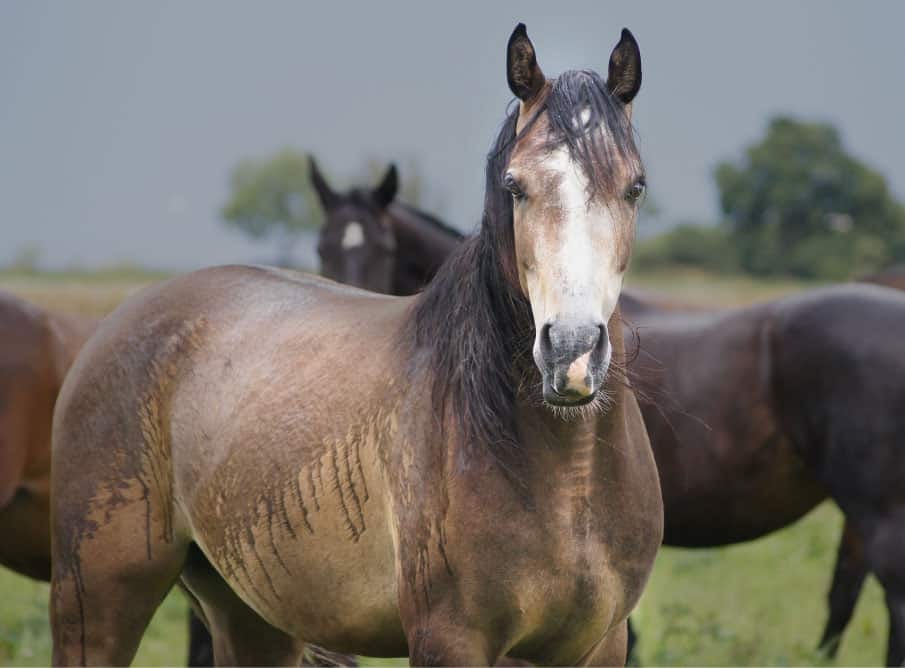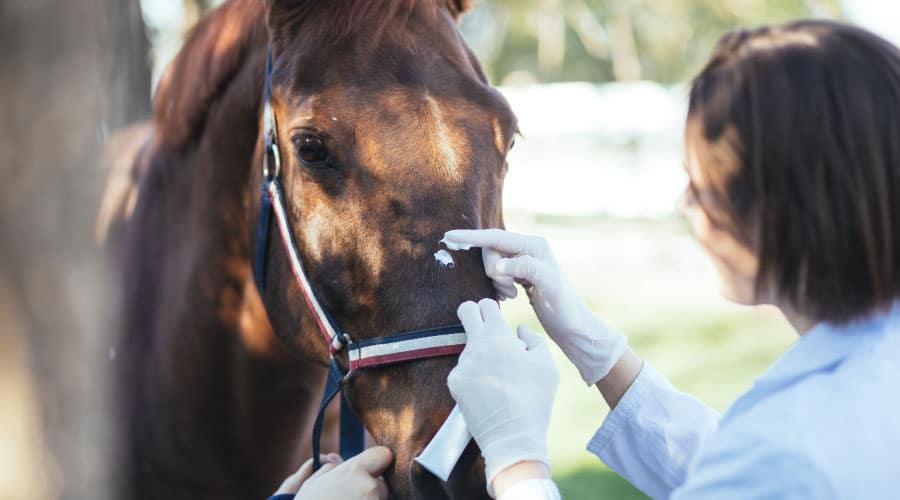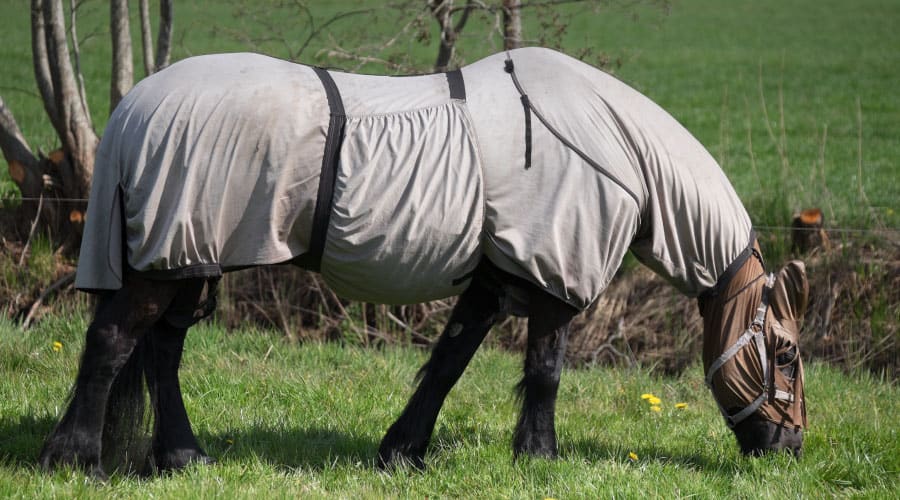- Your source for stall mats, rubber arena footing, arena harrows and arena dust control.

All horse owners know that exercise is a vital part of the health and wellbeing of our horses. There are however some situations where, due to various medical or non-medical reason, where this might not be possible or advised. Rain rot might be one of those situations .
.
You should not ride your horse if your horse has rain rot. The lesions that are formed on a horse’s body from rain rot can be painful and make horses sensitive to touch on those areas. Using a saddle could cause lesions to rub off and cause the horse to bleed. Moisture build-up from sweating under the saddle for extended periods could worsen the condition and delay healing. The infected areas, especially where you place the saddle, should be completely healed before you can ride the horse.
There are many things you should know about Rain rot, so let’s get into the nitty-gritty of it all to keep your horse healthy and fit.
What is rain rot?
Dermatophilosis, also known as Rain rot or Rain Scald is caused by a bacterial called dermatophilus congolensis. Rain rot commonly found on the horse’s back, shoulders, top line, bum region, and flanks. When a horse has rain rot lesion or scabs are formed on the horse’s body. These lesions are classically described as having an “old paintbrush appearance”. These lesions are painful and may bleed when removed.
What causes rain rot?
Broken skin and moisture
Two important factors must be present for the development of rain rot and that is, skin damage and moisture. In other words, the bacteria wait for an opportunity when the skin is damp and finds a break in the skin so that the bacteria can find a way into the horse’s system and cause the infection. Other than the presence of skin trauma, insects such as flies, mites, lice, ticks, and mosquitoes can also cause infection. Other sources of skin damage can include things like prickly vegetation, sharp paddock fences, or paddock wire.
Climate
Rain rot is more common during wet seasons and humid climates, horses living outside are at greater risk. Rain rot is common when horses are exposed to rain for days at a time without drying. Rain rot can also occur when sweating under blankets and tack where moisture is trapped for extended periods and a break in the skin is present.
Weak immune system
A horse with a strong immune system is unlikely to be at risk for rain rot. Horse with weak immune systems are less likely to fight off bacteria, poor nutrition and poor hygiene can also make the horse more susceptible to rain rot.
Outbreaks in show horses can sometimes occur with frequent high-pressure washing. Horses should be air-dried after washing and an anti-bacterial ointment can be used on scrapes and open skin to avoid bacteria seeping through.

So, can you ride a horse with rain rot?
No, you should not ride a horse with rain rot.
Lesions and sweating
It is crucial to keep skin dry when treating rain rot. Because rain rot is commonly found on the horse’s back, using a saddle or saddle rug would rub off the lesions that can cause bleeding, exposing your horse to bacteria build up under the tack. Broken skin exposed to sweat, and moisture can only add to worsening the condition.
Rain rot may be painful
Lesions are painful and horses that are sore to touch and sensitive on affected areas should not be ridden. Your horse should be clear off all rain rot before trying to ride. Your horse’s back should be able to be poked and prodded without any signs of sensitivity before putting a saddle on.
Other forms of exercise should rather be used such as lunging and the use of a horse walker.
How to treat rain rot?
Ask a vet
When you know your horse has rain rot, it is important to start treatment ASAP. You can ask your vet to give you a prescription that will usually come in the form of a topical cream that must be applied daily after cleaning the area and removing the scabs from your horse’s body. In more progressive cases your vet might prescribe a course of an antibiotic such as penicillin. The bacteria has shown to be resistant against polymyxin B, bacitracin, and sulfonamides.
OTC medicines and Home remedies
There are many Over-the-Counter (OTC) treatments for rain rot in forms of shampoo, sprays, and creams. Be careful, a lot of times the bacteria will not be affected by OTC remedies so make sure you know what the active ingredient is and that it will aid in killing the bacteria.
Tea Tree Oil
One study suggests that tea tree oil does show a marked improvement in the treatment of rain rot. This can be tried in the beginning phases of rain rot and less severe cases. Add a few drops of tea tree oil (1%) to a bottle of baby oil, wash your horse on the affected area with an antibacterial wash, and once completely dry (very important!) apply the tea tree oil/ baby oil solution to the affected areas. Do not over apply as you want the skin to breathe. Do this twice a day. It might take a while to see an improvement but be persistent in the treatment routine.

How long does rain rot take to heal?
Most horses that suffer from rain rot will recover within 3 to 4 weeks and your horse’s skin should return to normal over time. Certain elements can delay healing and should try and be prevented. Humid climates and moisture exposure to the area can delay the healing process or even worsen the condition. Horses that are stressed and that have low immune systems can take longer to heal.
Boosting your horse’s immune system could aid in healing. You might want to consider giving your horse an immune booster or providing him with a mineral lick or a multivitamin supplement.
Is rain rot contagious?
Yes! Rain rot is a contagious disease.
There are several ways in which spreading can be prevented:
Grooming kit
Sharing grooming kit– when grooming your horse, it is important to keep your grooming kit clean and not use your grooming kit on other horses. The scabs left behind can contain a high amount of bacteria. When grooming a healthy horse the bacteria can then be transferred through open skin and scraped. It is also important to dispose of the scabs in a bin and not leave it lying around on the ground to avoid coming in contact with healthy horses.
Isolating the horse
If the horse is in a herd than the horse should be removed and isolated from the other horses to prevent cross-contamination. The bacteria causing rain rot (Dermatophilus congolensis) can survive on the mouthparts of ticks for several months. Biting and nonbiting flies can transmit the bacteria for up to 24 hours after they have fed on the donor’s lesions.
Using a light day sheet
Using a back rug or a day sheet can help contain the bacteria by keeping flies and other insects away from the horse’s lesions hosting the bacteria. Using a back rug can also help keep moisture away. It is important to use a light back rug so the skin can still breath and that sweat does not build up under the rug.

How to prevent a horse from getting rain rot?
It is important to note that the bacteria causing rain rot (Dermatophilus congolensis) is not able to penetrate healthy skin. There must be a break in the skin for bacteria to gain access to the horse’s system. Ways to prevent rain rot:
- Keeping your horse dry and providing shelter from wet weather.
- Ensure that your horse has good-quality nutrition and a strong immune system.
- Pest control and control of ectoparasites may limit the number cases and so will the use of a good fly, insect spray, and tick repellent.
- Applying an anti-bacterial ointment on cuts and scrapes.
- Good grooming and ensure bedding is kept clean and dry.
- Isolate Horses that have rain rot from other healthy horses in the barn.
- Trimming a horse during winter – when horses grow long coats, they can trap moisture under their coats making them more susceptible to the bacteria.

